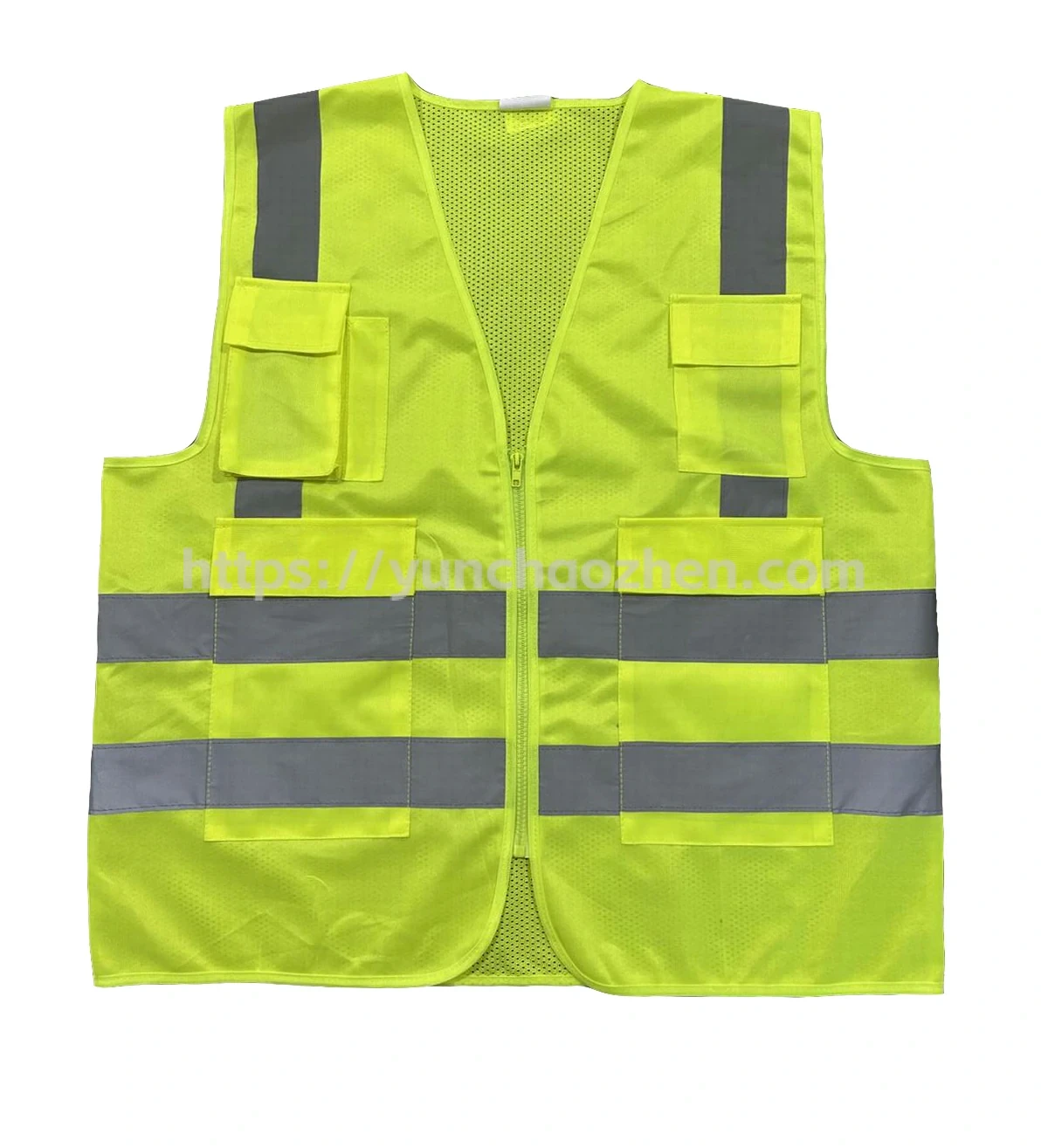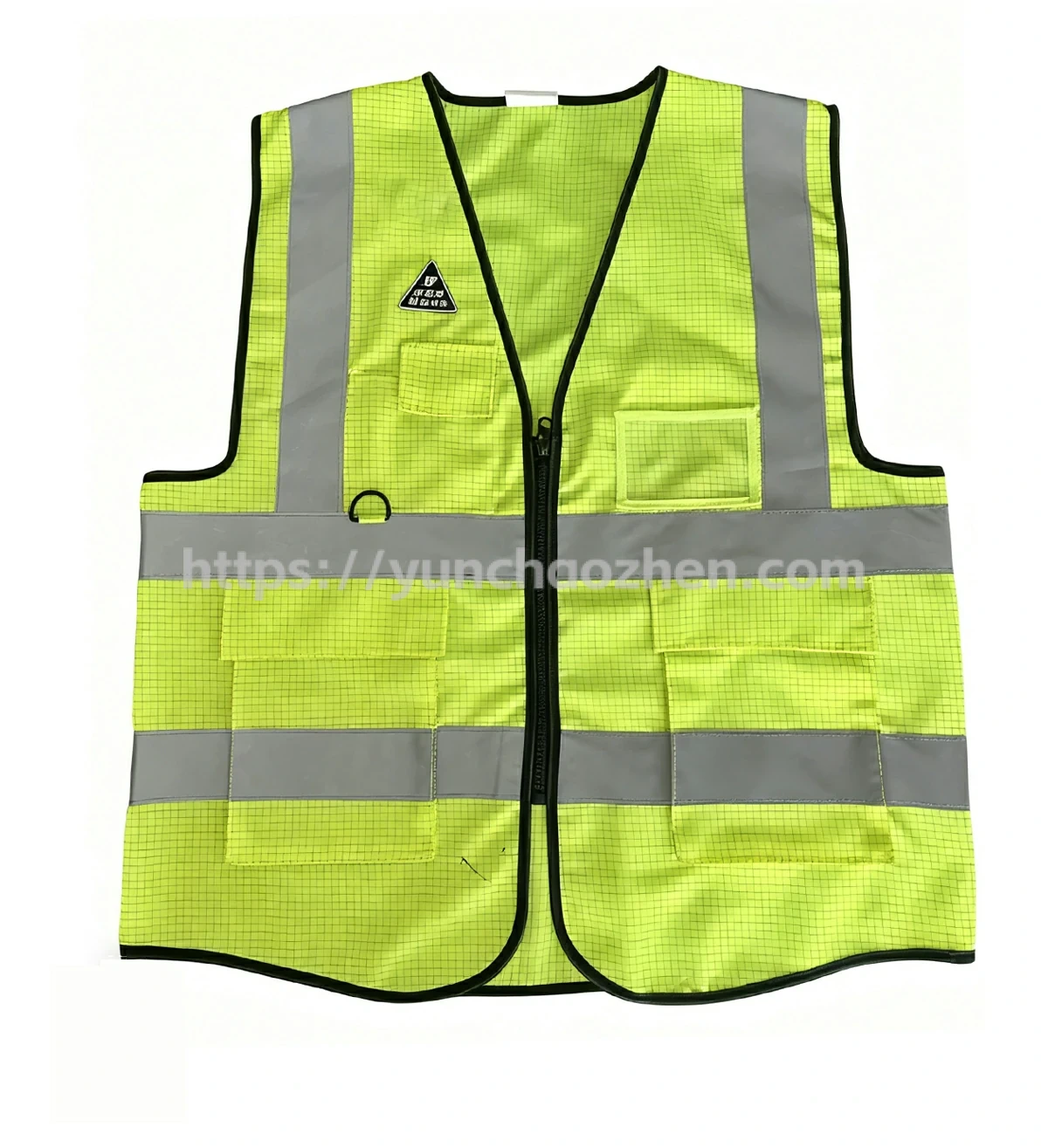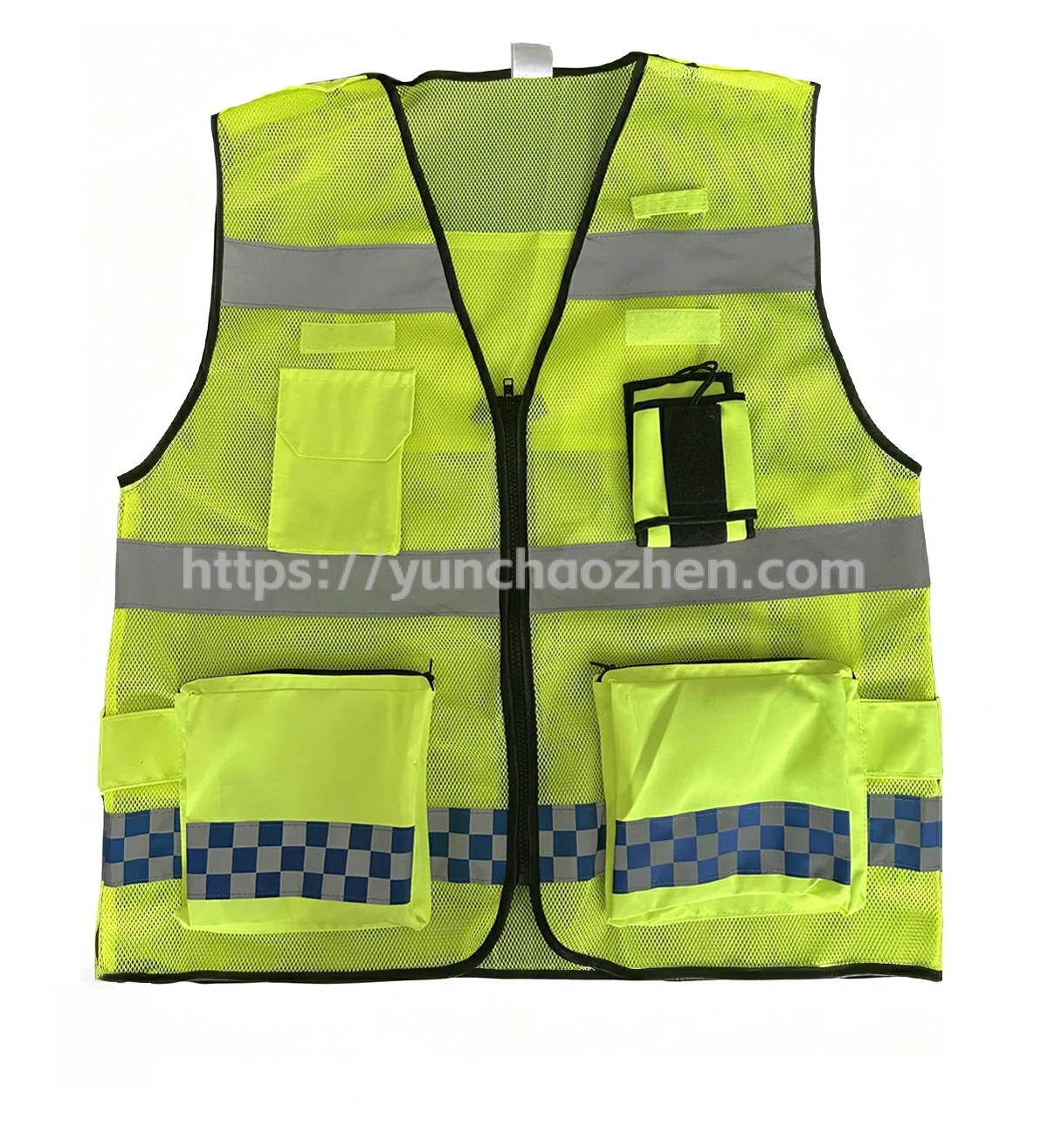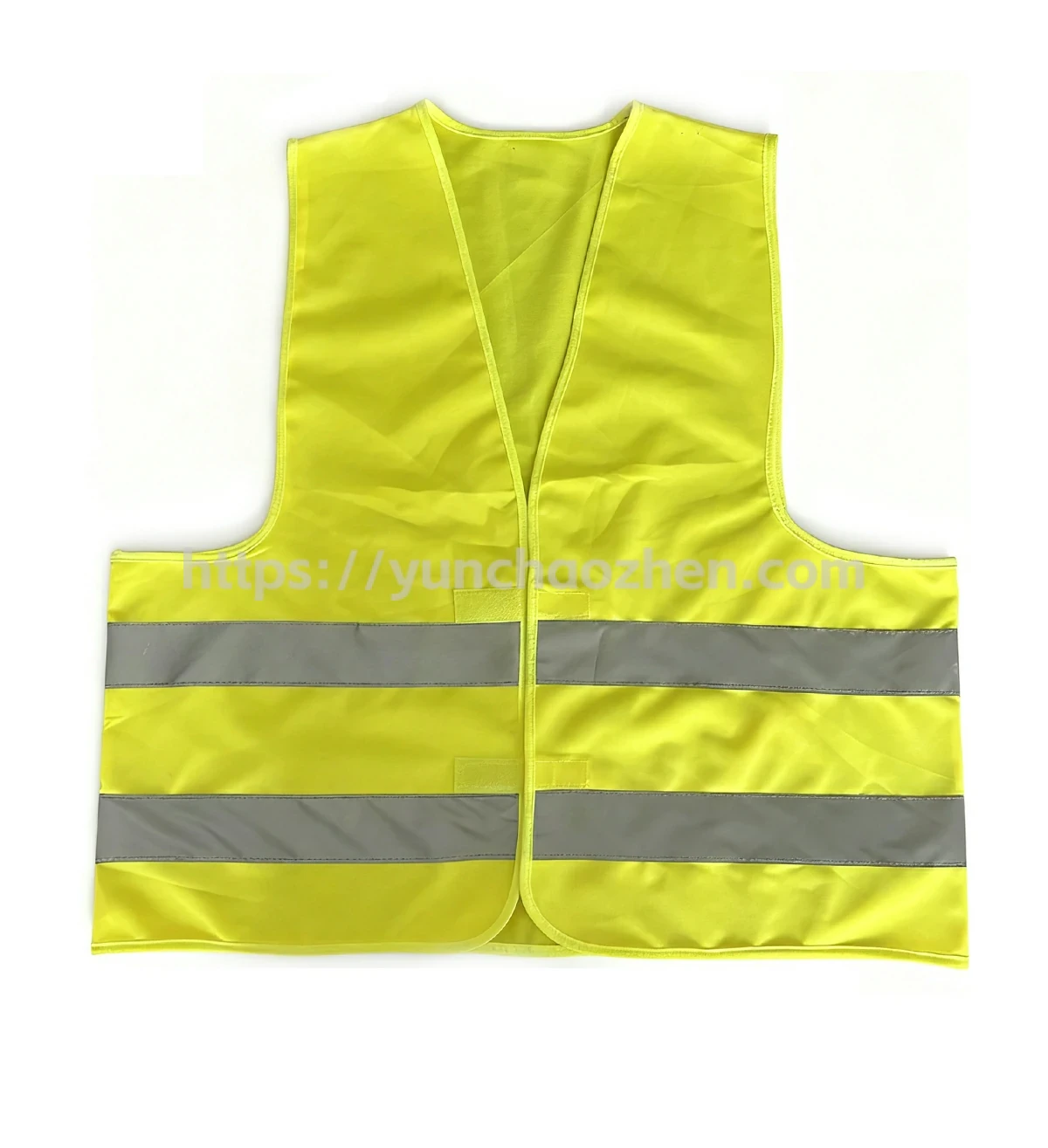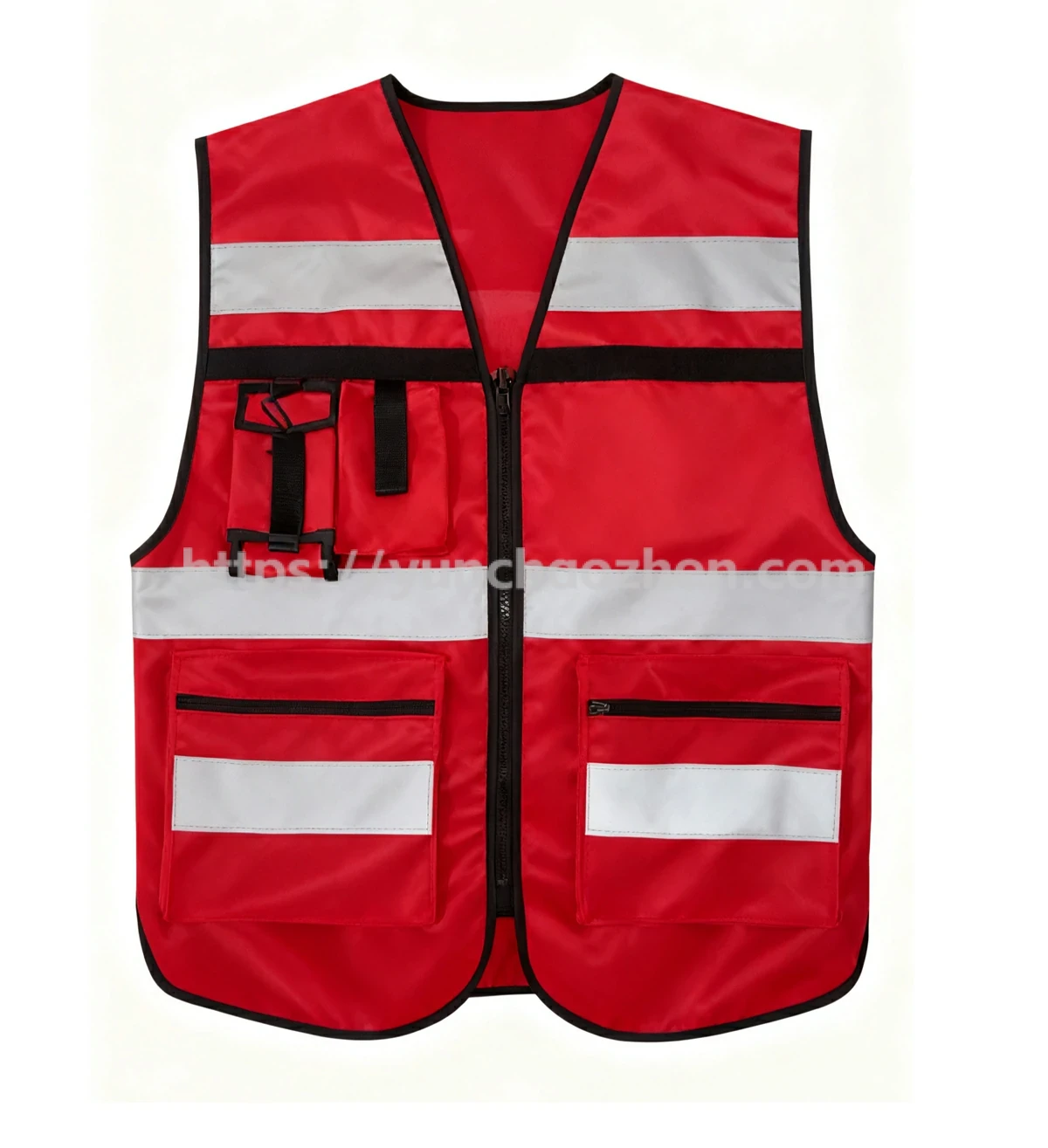Color Classification of safety vests, like yellow for workers . safety vests have colors (yellow, orange, red, blue, etc.)
Fluorescent Yellow: As the most common color in reflective vests, it has excellent visual reflective performance and can clearly show the wearer’s position in various environments. Therefore, road construction workers, traffic controllers and other groups widely use it to provide visual guarantee for their work safety.
Orange Chaleco de seguridad: This color has extremely high visibility. Even in complex or poor-light scenarios, people can quickly identify the wearer. Safety supervisors or on-site managers generally wear it to facilitate their supervision and coordination work.
Red Safety Vest: It has strong light penetration and can still maintain a good visual warning effect in special environments such as smoke and dust. Organizations often assign it to security inspectors, fire rescue personnel and other personnel with special responsibilities.
Blue Safety Vests: It belongs to the cool-tone category and gives people a professional and calm feeling visually. Technical maintenance personnel or external cooperative personnel (such as full-time safety officers) usually wear it, which helps to distinguish the identities of personnel in different types of work.
Other Special Colors: In addition to the above single colors, there are also combined color styles such as yellow-blue combination and dark blue combination. People mostly use such reflective vests in specific work scenarios, or enterprises and units make them according to customized needs to meet the personalized safety identification requirements.
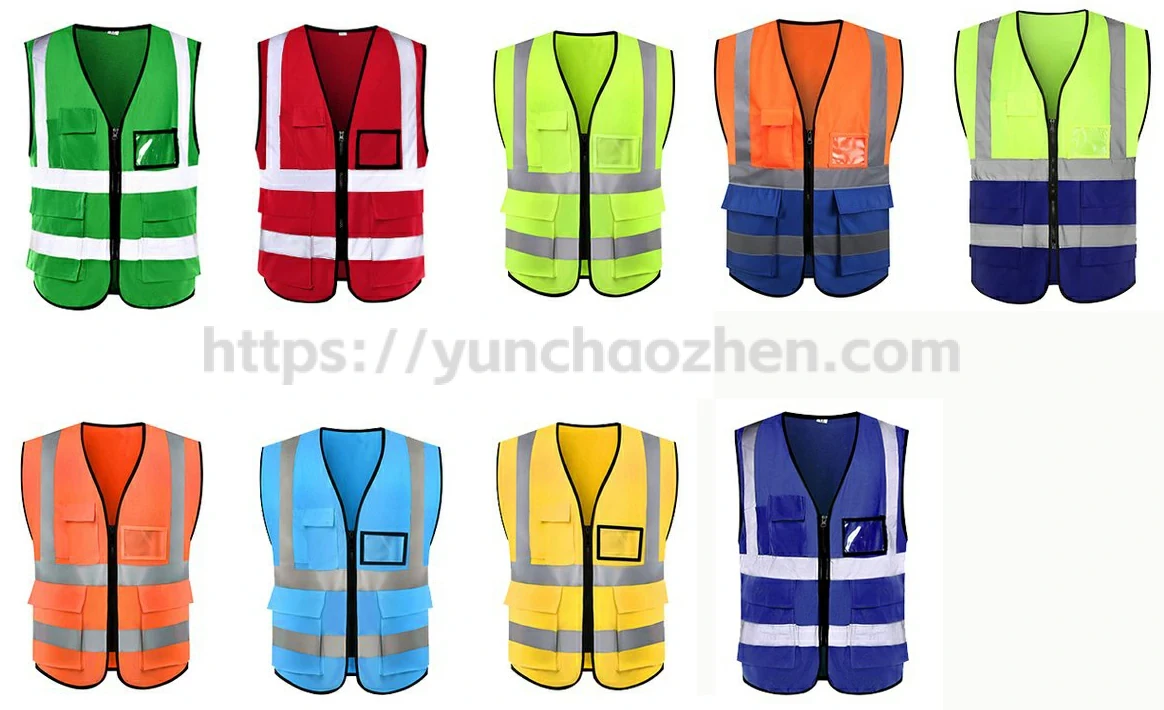
Regular Applicable Groups for Each Color
Fluorescent Yellow: Mainly for road construction workers, environmental sanitation workers, traffic command personnel, etc.
Fluorescent Orange: Mainly worn by safety supervisors and construction site managers.
Red: Suitable for security inspectors, fire rescue personnel, emergency medical rescue personnel, etc.
Blue: Commonly seen in the clothing of technical operation specialists and special operation practitioners.

